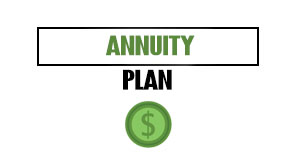Homeownership is not just about securing a place to live; it is a significant financial milestone that requires careful planning, strategic budgeting, and diligent resource management. Buying a home can be daunting, given the rising real estate costs, fluctuating interest rates, and many other financial factors.
However, with the right tools, goals, and mindset, prospective homeowners—whether budding professionals, growing families, or older adults approaching retirement—can make intelligent decisions that lead to long-term stability.
The homeownership discussion is particularly relevant to older adults, an increasingly active demographic in the real estate market. A surprising number of senior adults are purchasing new homes for retirement or investing in second vacation homes.
Older millennials—buyers between the ages of 34 and 43—make up 21 percent of 2022’s home buyers, and Generation X comprises 24 percent of 2023 home buyers. Caught between millennials and boomers, Gen Xers are crucial to today’s housing market. Gen X is in its peak earning capacity, with the highest median income of any generation.
According to 2023 data from the US National Association of Realtors (NAR), baby boomers—segmented into younger and older—comprise 23 and 16 percent of recent buyers, respectively. Baby boomers remain dominant in the housing market, and the data shows they still played a lead role in 2023, accounting for 39 percent of home buyers overall.
Many older adults—from millennials to baby boomers—see the value of moving closer to family, downsizing, or investing in properties that offer better amenities and a desirable lifestyle. Yet, they face unique financial challenges that necessitate tailored budgeting strategies.
This article offers a comprehensive guide to intelligent budgeting for prospective homeowners, focusing on retirees and older adults. From setting clear financial goals to adopting fintech solutions for more efficient money management, future homeowners must prepare for the journey ahead. Savvy financial planning, including using specific fintech tools, is vital for managing the purchase, ongoing maintenance, and unexpected home ownership costs.
Table of Contents
ToggleBuying a Home: Tips for Better Financial Management Before, During, and After Your Purchase
Budgeting for your home goes beyond the down payment—it includes planning for utilities, home maintenance, and even small but impactful choices like savvy interior fixtures that enhance energy efficiency.
1. Set clear financial goals
The first step in budgeting for a home purchase is establishing clear, realistic financial goals. These set goals will act as a roadmap, guiding every financial decision you make toward homeownership.
2. Determine how much you can afford
Assessing your finances is crucial in determining how much home you can afford. This includes evaluating your income, current savings, debts, and monthly expenses.
Understand the 28/36 rule for home affordability
The 28/36 rule is a practical, widely recognized guideline that helps prospective homeowners determine how much house they can afford. According to Bankrate, it suggests that up to 28 percent of your total or gross monthly income should be allocated to housing costs or housing-related debt, and no more than 36 percent should be spent on total debt, including housing. This rule provides a framework for managing mortgage payments while meeting other financial obligations.
Diving into the 28/36 rule: front-end and back-end ratios
- Front-End Ratio (28 percent): This ratio represents the maximum percentage or chunk of your gross monthly income that should go toward housing expenses. Housing costs include PITI—principal, interest, taxes, and insurance—all of your monthly mortgage payments.
- Back-end ratio (36 percent): This is the maximum percentage of gross monthly income that should cover all forms of debt, such as mortgage payments, credit card debt, car loans, personal loans, student loans, and other financial obligations. It’s also known as the debt-to-income (DTI) ratio.
The 28/36 rule as a mortgage guideline
Although called a “rule,” the 28/36 standard serves as a financial management guideline rather than a rigid requirement. Mortgage lenders use it to assess a borrower’s ability to manage mortgage payments under a conventional conforming loan, the most common mortgage type.
This guideline helps lenders ensure borrowers don’t overextend financially while adhering to the legal mandate of evaluating the borrower’s “ability to repay.”
However, exceptions to this guideline exist:
- Many lenders require a DTI ratio of 43 to 45 percent for conventional loans. Some accept up to 50 percent for applicants who demonstrate good credit.
- FHA loans may allow up to 31 percent on the front end, referring to housing-related debt, and 43 percent on the back end, referring to total debt.
- VA and USDA loans target a DTI ratio of 41 percent, with flexibility based on other qualifying criteria.
While the 28/36 rule is a helpful baseline for potential homeowners, affordability can vary based on individual credit history, current financial commitments, and local housing market conditions.
Adjust your budget to avoid being house-poor
By setting a budget for home costs, you can avoid the pitfalls of being house-poor: spending too much on your home and not leaving enough for other essential expenses.
3. Ensure you have enough for a home down payment
Down payments for home purchases exist in a range. They can start as low as 3.5 percent on an FHA loan but more commonly follow the 20 percent rule based on the purchase price. The larger your down payment, the more favorable mortgage terms you’re likely to receive.
Begin by setting up a dedicated digital savings account and using trusted fintech apps to automate contributions to your down payment fund.
4. Plan for closing costs and other fees
In addition to the down payment, homebuyers should account for closing costs, which typically range between two to five percent of the total home loan amount. This includes expenses like appraisal fees, title insurance, and legal costs. Fintech solutions can help you track these expenses and prevent surprises at the closing table.
5. Use fintech to track spending and manage finances
Fintech has revolutionized how we manage money, and its benefits extend to future homeowners. Mobile wallets, budgeting apps, and investment platforms make it easy to track expenses, save efficiently, and invest wisely. Here are some ways to leverage these tools:
Mobile wallets and digital payment solutions
Apps can streamline everyday purchases, help track spending, and even offer cashback rewards on certain transactions. A mobile wallet lets you consolidate your spending data, making monitoring where your money goes each month easier. These tools can be game-changers, providing real-time information to help you gain control over your pre-homeownership budget.
Budgeting tools to stay on track
Budgeting apps like YNAB (You Need A Budget), Mint, and Personal Capital allow you to categorize your spending, set savings goals, and generate reports that track your progress. If you are serious about saving for a home, these apps can send real-time alerts when you overspend in specific categories and help you make adjustments.
Investment and savings automation
Fintech platforms offer automatic saving and investing solutions. These apps round off purchases to the nearest dollar and invest the difference, helping future homeowners passively grow their savings while managing daily expenses.
This method is beneficial if you have a longer time horizon before purchasing your home.
6. Plan for long-term expenses
One of the biggest financial mistakes new homeowners make is underestimating long-term expenses. Homeownership extends far beyond the mortgage, and it’s essential to account for costs like utilities, maintenance, and repairs.
Utilities and home maintenance
Utilities such as electricity, water, and gas can vary significantly depending on the size and location of your home. Research utility costs in your area and factor them into your monthly budget.
Moreover, your long-term financial plan should include regular home maintenance, including HVAC servicing, plumbing repairs, and lawn care. Homeowners spend approximately one to three percent of their home’s value annually on maintenance.
Install energy-efficient solutions
Investing in energy-efficient appliances and eco-friendly home systems can drastically reduce utility bills. Consider upgrading to LED lighting, energy-efficient windows, and low-flow fixtures to conserve water and electricity.
When it comes to energy planning, one often overlooked aspect is the choice of interior lighting. When you go for high-quality fixtures, such as a well-made flush mount ceiling light to light your main rooms or kitchens, it is less costly in the long term due to the materials’ durability. When paired with energy-saving LED bulbs, these lights consume less power and have a longer lifespan, translating into lower electricity bills and fewer replacements over the years.
Planning for the Unique Homeownership Needs of Retirees and Older Adults
The older demographic is a unique but significant homeownership market in the US that requires a different approach. Retirees and older adults face unique financial challenges when purchasing or maintaining a home and must plan accordingly.
Understanding the growing market of retiree homeownership
The surge in the retiree demographic has created a substantial demand for homeownership, with retirees looking to either downsize, relocate to warmer climates, or purchase a second home for vacations or seasonal living.
Retirees prefer to buy homes with cash
The 2023 NAR report data shows that retirees comprise a considerable portion of this group. The NAR report also notes that retirees are more likely to purchase homes with cash transactions, accounting for significant cash sales in the past year.
This trend demonstrates that retirees are financially solid and vital in the housing market. They often prefer to avoid mortgage debt to preserve liquidity.
Motivations and Preferences of Older Homebuyers
As they move on to a new stage in life, older adults and retirees change their home preferences based on a shift in priorities.
A shift in home preferences
Retirees and older adults seek homes offering comfort, safety, and community. Preferences for this demographic often include:
- Single-story homes eliminate the need for stairs and improve mobility
- Proximity to healthcare facilities, recreational amenities, and social communities
- Energy-efficient features like improved insulation, solar panels, and energy-saving appliances reduce long-term costs and support sustainable living
The demand for senior-friendly housing also drives developers to create communities that cater to older adults. These communities offer 24/7 medical support, recreational facilities, and social engagement programs. These housing solutions allow retirees to maintain an active lifestyle while ensuring their safety and mental well-being.
The downsizing and relocation trend
A significant trend among retirees is downsizing—opting for smaller, more manageable homes that are easier to maintain and less expensive to heat, cool, and insure. Downsizing often involves moving from large family homes to condos, townhouses, or active adult communities offering shared amenities and a more social environment.
Many retirees choose to relocate in addition to downsizing. Florida, Arizona, and Texas have seen a consistent influx of retirees due to their warmer climates, tax benefits, and abundance of retirement-friendly housing communities.
Financial Considerations for Retiree Homeowners
Retiree homeowners are transitioning from the accumulation to the distribution phase of their incomes, which presents unique financial considerations.
Home equity as a financial asset
For many retirees, home equity represents a significant portion of their wealth. According to the National Council on Aging, the median home equity for a homeowner aged 65 and above is $250,000. This often makes it their most significant asset.
However, according to the same report, housing costs make up about 25 percent of American seniors’ expenses, making these costs challenging.
Retirees can leverage their home equity to help fund their expenses in several ways, including:
- Reverse mortgages: Allowing homeowners aged 62 and older to convert a portion of their home equity into tax-free cash. They don’t need to sell their home to tap into their home equity.
- Home Equity Lines of Credit (HELOCs): Providing access to funds for unexpected expenses, home improvements, or medical costs.
- Cash-out refinancing: Enabling retirees to refinance and tap into their equity, potentially funding a more comfortable retirement.
These financial tools offer flexibility but come with risks, emphasizing the need for careful financial planning and consultation with a trusted financial advisor.
Challenges in mortgage access for retirees
While many retirees prefer to purchase homes outright, some still rely on mortgage financing. However, securing a mortgage in retirement can be challenging due to income stability concerns.
Lenders assess retirees’ income sources, including pensions, Social Security, investments, and retirement account withdrawals, so it is essential for them to have a well-documented and consistent income history.
Recent changes in mortgage regulations have made it easier for retirees to qualify based on their asset depletion, allowing lenders to consider retirement assets as income. Nevertheless, retirees should be cautious about new debt, impacting their cash flow and disrupting overall financial stability.
More Tips for Older Adults Buying Retirement or Second Homes
Whether you’re downsizing to a smaller property or buying a vacation home for retirement, here are tips tailored for you:
1. Budget for a comfortable retirement home
If you’re purchasing a retirement home, consider factors like proximity to medical facilities, accessibility, and the overall cost of living in the area. Opt for homes with single-story layouts to avoid future mobility issues. Budget for necessary modifications, such as installing grab bars or ramps, to make the home more accessible as you age.
2. Build things to last: focus on quality construction and materials
Retirees should prioritize quality in home construction, particularly regarding fixtures, appliances, and building materials. While it may be tempting to choose cheaper options, investing in durable materials can reduce maintenance costs and ensure your home remains in excellent condition for years. For example, investing in energy-efficient HVAC systems and kitchen appliances reduces energy bills and increases the home’s value if you decide to sell later.
3. Use smart solutions to manage cash flow
Despite initial hesitations about technology, many older adults have embraced fintech, recognizing its benefits in managing investments, monitoring cash flow, and planning long-term expenses.
According to the AARP, 43 percent of adults aged 65+ are now using digital banking solutions, reflecting a significant adoption of fintech among seniors. However, this figure pales compared to younger users, so there’s much room for growth.
Fintech solutions have revolutionized how retirees manage their finances and homeownership, making tracking expenses, managing budgets, and exploring home financing options easier. Fintech tools that enable smart budgeting among older homeowners include:
Budgeting apps
User-friendly and easy to navigate, budgeting apps can help retirees plan for ongoing housing expenses, including utilities, maintenance, and property taxes.
These tools can also help retirees allocate their retirement savings wisely, ensuring they have enough income to cover ongoing expenses like home maintenance and medical bills.
Mortgage calculators
Offered by many financial platforms, mortgage calculators allow retirees to estimate monthly payments and compare mortgage rates quickly.
Online mortgage applications
Fintech has simplified the mortgage application process, offering a seamless experience from pre-qualification to closing, tailored to older adults’ needs. Applicants don’t need to show up in person, making it convenient for seniors with mobility or disability issues.
4. Always stay on track: avoid pitfalls and be proactive
When budgeting for a home in your retirement years, you need to keep on track, as your resources may differ from what they were at your peak earning years.
Avoid taking on more debt
While it may be tempting to stretch your budget to afford more luxuries, avoiding overextending yourself financially is crucial. Too much debt can leave you little room for other essential expenses or emergencies. Stick to your pre-established budget, and if needed, consider downsizing.
Plan for future financial needs
Homeownership is a long-term commitment, and it’s essential to accommodate future financial needs, such as emergency savings or medical bills. Ensure your home purchase aligns with your broader economic goals and doesn’t hinder your ability to save for these future expenses.
Regularly review your budget
Homeownership has many moving parts, and letting your budget slip as unexpected expenses arise is easy. Set aside time each month to review your budget and adjust as needed.
With Savvy Budgeting, Retirees Can Spend Their Golden Years in Their Dream Homes
Retirees and older adults play a crucial role in the housing market, not only as active homebuyers but also as a demographic with unique needs and preferences. As life expectancy increases and retirees seek more comfortable living arrangements, homeownership will remain a central part of retirement planning.
Financial tools, from reverse mortgages to fintech solutions, provide retirees with the resources to achieve their homeownership goals while maintaining financial stability.
Moving forward, the housing market must continue adapting to meet the demands of this expanding demographic, offering homes that provide shelter, safety, community, and sustainability. With thoughtful financial planning and the right technological resources, retirees can enjoy the benefits of homeownership well into their golden years.
Featured Image Credit: Photo by Thirdman; Pexels
















